Peanut is a common food that we can find in our daily eating diet. It is loved to eat by a lot of people. However, do you know how a peanut plant looks, or do you ever wonder how to plant a peanut?
Where Are Peanuts Come From?
Peanuts are actually part of the legume family native to South America, Mexico, and Central America. They are also known as earthnuts, jack nuts, goobers, goober peas, pinders, manila nuts, pindas, and monkey nuts.
Is the peanut the seed?
It is not a seed, and it is not a nut either. In fact, it is categorized in the vegetable category, and it belongs to the legume family. Which means it is in the same category as beans and peas.
The peanut’s popularity is apparent in its variety of forms. Peanuts are often peanut butter, salted peanuts, peanut butter sandwiches, candy bars, peanut brittle, and shelled peanuts. Their high nutritional content and affordability over other nuts have also made peanuts a popular choice.
Planting your own peanuts for selling, making peanut butter, or simply eating can be quite fun and delightful. Here are a few basic steps when planting peanuts.
How Long Does It Take to Grow a Peanut
The planting cycle of peanuts takes about 100-150 days, and some late-maturing varieties can reach 180 days before being harvested.
Peanut Growth Cycles
Peanuts are an important agricultural crop, used in many different ways. Their growth cycle is complex and fascinating, and understanding it can help farmers increase their yields. In this article, we’ll explore the peanut growth cycle in detail to gain a better understanding of this incredible plant!
The peanut plant has a unique growth cycle compared to other crops. The first stage of the cycle begins with planting, which is typically done at the beginning of spring when soil temperatures reach between 65-85°F. During this time, farmers use mechanical or hand tools to place individual peanuts into furrows in the ground. As the season progresses, plants emerge from these shallow holes and begin their journey toward maturity.
Once planted and sprouted, the peanut plant moves through several stages of growth over a period of 4-5 months. During this time, it produces flowers that eventually give way to pods containing mature peanuts. At the end of its lifecycle, the peanut plant dies back and prepares for harvest.
1. Sowing And Germination
Planting peanuts begins with sowing the seeds. They should be planted 1-2 inches deep, in rows spaced at least 18 inches apart. It’s important to use well-drained, fertile soil. Peanuts need plenty of sunlight and warm temperatures for germination, which usually takes about 10 days.
After germination, the leaves will start to emerge from the soil and form a rosette shape at the base of the plant. The peanut will then begin to grow downward into the ground as it matures, forming pods that contain two or three nuts each. As the peanut grows, it develops an extensive root system that helps absorb nutrients and water from deeper layers of soil.
In order for successful growth and development, it is essential to irrigate regularly during dry periods. After about six months of growth, peanut plants are ready for harvesting.
2. Seedling
The seedling stage is from the germination of 50% of the seeds to the opening of the first flower of 50% of the plants. The seedling period generally takes about 20-35 days. This stage includes the development of a stem, leaves, and roots. Peanuts typically take between two to three weeks to reach this stage in the growth cycle.
The specific time varies greatly due to the variety and planting season. The spring seedling period is generally 25-35 days, and the summer seedling period is 20-25 days. Some summer-sown early-maturing varieties may only need 20 days.
At this point, the seedling is extremely fragile so proper care must be taken when weeding and cultivating around it. The young plant will require adequate sunlight and water in order for it to thrive during its early stages of life. Nutrients from the soil also play an important role in helping the peanut reach its full potential.
As the seedling continues to grow, more leaves begin to appear on the stem and its root system starts to expand further into the soil, allowing for better access to nutrients and water. With proper care, the seedling will eventually grow into a mature peanut plant ready for harvest.
3. Flowering And Fruiting
The flowering period is 15-35 days. Depending on the planting season and variety, the flowering period is 25-35 days for spring peanuts and 15-20 days for summer peanuts.
This stage is the most important of the entire growth cycle, as it determines whether the plant will yield a crop or not. The flower spikes, or racemes, develop from the axil of each leaf and contain both male and female flowers. The male flowers are clustered together at the base of the raceme and are easily recognizable by their yellowish petals. The female flowers appear further up on the spike and have two wings that look like small green flags.
The pollination process for peanuts is quite complex due to their specific self-incompatibility system. Each flower can only be pollinated by another flower from a different plant that has a different genotype than its own. This ensures genetic diversity in the population and helps to strengthen disease resistance in peanut crops. Insects such as bees are drawn to peanut flowers due to their sweet nectar and they help facilitate cross-pollination between plants.
Once successful pollination has taken place, fertilization occurs and fertilized ovaries begin to swell into pods that contain one or more seeds. Depending on environmental conditions, it takes approximately 5-7 weeks for these pods to mature before they can be harvested. In order to maximize yields, farmers should harvest peanuts when their shells have begun to harden but still remain slightly flexible when touched.
4. Pod Setting
From 50% of the plants with chicken head-shaped young fruit to 50% of the plants with full fruit, it is known as the pod setting period. The pod set generally 20-40 days, spring sowing will take about 30-40 days, and summer sowing will take 20-30 days. As the pods grow, they become more visible and prominent on the plant.
When the pod setting phase is complete, each peanut plant should have between four and six mature pods that are ready for harvesting. The pods are typically yellow or reddish in color and contain several seeds inside. Some varieties may also have pods that are larger than average or with multiple sections containing multiple seeds.
Harvesting the mature pods at this stage is essential for ensuring high yields of peanuts from each plant. If left on the plant too long, many of the seeds will develop into small offshoots known as “pegs” which will not be suitable for eating or processing. Careful timing and regular monitoring are necessary for successful peanut production.
5. Maturation And Ripening
The period from the appearance of full fruit on 50% of the plants to the full ripeness of most pods is called the ripening period. The ripening period of spring sowing peanuts is 40-50 days, and summer sowing is 30-40 days.
The flowers have both male and female parts, and after self-pollination, the petals fall off. Within a few days, the ovary or seed pod begins to swell. As it matures, it changes from green to light yellow or tan in color. Inside, two to four seeds will develop in each pod.
The next stage is ripening, which begins when the pods dry out and turn brown and brittle. This usually takes about 120 days from planting for Virginia-type peanuts and about 80 days for Spanish-type peanuts. During this time, the shell thickens and hardens while the kernels get larger and fill out the inside of the shell.
When harvested at this point, these peanuts are ready for market as raw in-shell nuts or can be further processed into other products such as peanut butter or snacks like boiled and roasted peanuts.
What is the Best Month to Plant Peanuts?
Generally, the best time to plant peanuts is from mid-to-late April to May. The time before and after the cool spring weather is the best time for peanut planting. You can plant plastic film coverage in advance to mid-to-late March.
However, the climatic conditions are different in different places, so it should be determined according to the actual situation when planting peanuts. Still, you must ensure that you do not sow when the temperature is too low!
Required Materials to Plant
- raw peanuts with the red skin still intact
- compost
- fertilizers
Soil Requirement
The requirement for soil texture to grow peanuts is not very high. Except for soils that are too sticky, you can plant soil of the general texture with peanuts.
The most suitable soil for growing peanuts is sandy soil with medium fertility, loose and breathable. If the peanut is planted in the clay soil, you can keep the soil loosened, and the yield can be higher.
Acid-Resistant
Peanuts are acid-resistant and suitable for growth in slightly acidic soil with a pH of 6.0-6.5. Peanuts can still grow in acidic soils, but you must apply lime to improve the soil and increase yield.
However, peanuts are not salt-tolerant. Planting in saline-alkali soils will make it easy to get germinated and die. The growing plants are short, and the yield is low.
Since tea is also suitable for growth in slightly acidic soils, peanuts are particularly suitable for tea plantation or tea tree interplanting.
Calcium-loving crops
Peanuts are calcium-loving crops, which grow well in high-calcium soils with high yields.
Besides, peanuts are suitable for soil growth with deep plow layers (about 30 cm in thickness) and medium organic matter (about 1%). If the soil organic matter content is too high (more than 2%), the pods are susceptible to contamination and resulting in lower quality.
Water Needs
Moving on from soil requirements, the peanut growth cycle also requires water needs to be met. For optimal growth, peanuts need a steady supply of ample water throughout their life stages. The amount of water needed will depend on several factors such as the type of soil, air temperature and humidity, and amount of sunlight.
It is important to keep the soil moist during germination and early seedling stages. Young plants are more sensitive to drought than mature plants so it is important to ensure adequate moisture for young plants. During the flowering period, peanuts require a moderate amount of water compared to other stages; too much water can lead to fungal diseases which can affect flower development and ultimately harvest yields.
When peanuts reach maturity, they no longer need daily watering but must be kept consistently moist until harvest time. This will help promote healthy root development and prevent nutrient deficiencies which may affect crop yield. To avoid over-watering and promote deep rooting, use drip irrigation methods or apply mulch around plants. Doing this helps conserve moisture in the soil which is necessary for optimal growth throughout the entire peanut life cycle.
Weed Management
Weed management is an important factor in the peanut growth cycle. For successful weed control, it’s important to plan ahead and take steps to prevent weeds from germinating and competing with the crop. Pre-emergent herbicides can be used to prevent the germination of weeds during the early part of the season. Post-emergent herbicides should be used later on when weeds have already emerged. Both types of herbicides should be applied carefully, following the manufacturer’s instructions and safety guidelines.
Cultural practices are also important in controlling weeds. Proper irrigation techniques can help reduce weed pressure by keeping soil temperatures lower for a longer period of time, making it harder for weed seeds to germinate. Rotating crops and using cover crops can also help reduce the number of weeds in fields by reducing seedbanks in the soil.
Be sure to keep records of all weed management activities that have been implemented throughout the season including field inspections, application rates, timing, and product names so that any changes needed will be easier to implement in future seasons. This will help ensure consistent control over an individual field’s weed population over time and increase yields while decreasing costs associated with managing weeds in future years.
Environmental Factors
Temperature plays a critical role in the success of a crop. Peanuts grow best when temperatures range from 22°C-32°C (70°F-90°F). If temperatures fall below this range, peanuts may not develop properly and won’t reach full maturity. Secondly, adequate water is also essential for peanut cultivation.
Peanuts need 1-2 inches of water per week during their growing season. Meanwhile, too much water can be detrimental to the roots and could cause them to rot. Finally, soil fertility and texture are paramount as well; peanuts require nutrient-rich soils with good drainage in order to germinate and thrive.
If soil is overly compact or lacks nutrition, the crop will likely be affected adversely. Therefore, careful consideration must be taken when assessing environmental factors that could potentially hinder peanut growth and yield.
Steps to Grow Peanuts
Planting and Fertilizing the Peanuts
Peanut is a warming crop, so the temperature cannot be too low. The most suitable and stable temperature for peanut seeding is around 12 °C, and its optimum flowering temperature is 23-28 ° C. The lowest temperature is 19 ° C. By considering this, the best climate to grow peanuts would be after the last frost of the spring.
Here are the steps for you to plant and fertilize the peanuts:
- Choose a planting site with light and sandy soil.
- Prepare the site by plowing the ground at least 7 inches or more. Sow in manure or compost.
- Soak the peanuts overnight before planting for quicker germination.
- Plant the peanuts less than 2 inches deep with at least 7 inches of spacing between them. Take care that the kernels are kept whole.
- Water the peanuts well after covering them with soil. Avoid watering again until the emergence of new sprouts. It takes about 10 to 15 days for new sprouts to grow. Do not overwater when you begin to water them regularly.
- Keep the plantation site free of weeds that may hinder peanut growth.
- Add more compost or fertilizers with extra calcium to enrich the soil.
Harvesting
After the planting process, do you know how long peanuts take to grow and when peanuts can be harvested? Well, it generally takes about 4 to 5 months for the plants to mature. It is nearly time to harvest the peanuts when the leaves turn yellow.
To harvest peanuts and remove them from their shells, farmers use a combine harvester. The peanuts are separated from their hulls after being cut from the ground by the combine and threshed. After the shelling process is complete, the peanuts are placed in burlap bags and transported to a drying facility.
Peanuts are dried at the processing plant to the proper level of moisture. This usually takes anywhere from four to six days to complete, give or take depending on the weather and other variables. This helps make sure they maintain their quality and freshness during transport to stores. Once the peanuts have dried, they are sorted by size and quality before being packaged for shipment.
Last but not least, before sending out any peanut orders, make sure that all applicable safety protocols have been followed. The packaging must be inspected for signs of mold or mildew, and it must be airtight to prevent contamination during transport. By taking these measures, farmers can have confidence that their product will reach its final destination in good condition and be ready for consumption.
Here is the harvesting process:
- Dig up a few peanuts to check if they are mature when the leaves start turning yellow. Continue checking periodically until the peanuts are ready for harvest.
- Harvest the peanuts by pulling the entire plant out. Each plant yields about 40 peanuts.
- Harvest the peanuts before a hard freeze.
Pest Control
Moving on from weed management to pest control, the peanut growth cycle can be affected by a variety of pests. These include insects such as thrips, aphids, and spider mites; rodents like ground squirrels and voles; birds like sparrows and blackbirds; nematodes; and fungi. To reduce the impact of these pests, farmers must keep their fields free of weeds and debris, rotate crops regularly, use resistant varieties when possible, and apply suitable pesticide treatments.
Insect pests can cause direct damage to peanuts by feeding on them or transmitting diseases. The most common insect pests are thrips and aphids. Thrips feed on peanut foliage by sucking plant sap, causing white to yellow spots on leaves with a silvery sheen. Aphids feed on foliage as well as flowers, leading to distorted pods and reduced yields. Farmers should scout for these insects regularly to monitor populations before they become damaging levels. Applying beneficial insect predators or chemical sprays can help control existing populations.
Rodents like ground squirrels and voles can cause significant damage to peanut fields by consuming both the foliage and developing pods underground. To reduce rodent damage farmers should practice proper sanitation techniques such as eliminating harborage sites in nearby areas, using wire mesh barriers around the field perimeter, trapping the animals near burrow entrances, or applying rodenticides where appropriate. Birds can also consume both foliage and developing peanuts so using scare tactics such as flags or other visual deterrents may be necessary to prevent crop losses from avian damage.
To ensure successful peanut production throughout its growth cycle it is essential for farmers to understand all potential pest threats that could negatively impact their yield. Taking proactive steps such as regular monitoring of pest activity combined with proper preventive measures will help keep peanuts safe from harmful pests until harvest time arrives.
Storing the Peanuts
After the peanuts have been harvested, you need to keep them in good storage.
Here are the steps for you to store them properly:
-
- Dry the peanuts thoroughly after harvesting them. You may leave them by the windows to dry if the weather is good or find a place with good air circulation indoors.
- You may use the oven to dry peanuts in small quantities. Place the peanuts in a tray and bake them in a preheated oven at 130′ F. The peanuts should be dry but still soft.
- Throw away rancid or moldy peanuts as they may contain a fungus called Aflatoxin. The said fungus can cause serious illness in humans when ingested.
- Store shelled and unshelled peanuts in a sealed container. Shelled peanuts can last for 3 months in the refrigerator. Unshelled peanuts can last for 4 to 6 months in the refrigerator.
- Store peanuts in freezer-safe containers for long-term storage.
For more information on growing peanuts, read Growing Peanuts and How To Grow Peanuts.
Can I Grow Peanuts At Home?
Yes, you can grow them at home. You can plant them in a container or a pot. Peanut seeds are easy to root and sprout, and the planting process is rather simple.
You can buy unroasted or fresh peanuts from your local market or store. You can then remove the upper skin of the peanuts.
Prepare a lunch box and a few pieces of tissue paper. Put tissue paper into the lunch box. Place the peanuts on the tissue paper. Don’t make the peanuts get too close to each other. Place each of them with a little space in between. Then cover the peanut with tissue paper. Pour some water into the lunch box for moisture. But please do not overwater it.
Transplant into a larger container
After 3 to 4 days, you can remove the tissue paper, and you will see the peanut is starting to germinate. You can then plant the peanut seed into large containers or plastic pots. You can insert a ratio of 70% garden soil with 30% of compost into the container. Then plant those peanut seeds into the container.
After planting the seed, you can cover the seeds with some potting mix. Sprinkler water on it so that the soil gets moisture.
Place the container in direct sunlight. After about a week, the seeds of the peanut plant will start germinating.
At this point, you can separate the baby plants and transplant them into different containers.
After transplanting peanuts into a new container, everything will become easy for you as long as you take good care of the plants. You should avoid using a fertilizer with a high level of nitrogen as it will kill the plant.
Your peanut will be ready for harvesting when the leaves turn yellow and begin to wither. Generally, it will take 120 to 150 days for you to harvest your crop after planting.
- You need to make sure the plant receives enough sunlight, and that the soil in the pot or container is breathable.
- Before planting the seed, you need to apply compound fertilizer in the early stage. After that, you need to apply phosphate fertilizer and potash fertilizer in the medium stage.
- You only need to prepare seeds for potted peanuts. Plant the seeds about 3 cm under shallow soil. Before planting, you must remove the shell so that it is better to germinate and root.
Some Challenges You May Have
There are two main challenges when growing peanuts.
First is the weeds that happen to grow through the plants just by the sheer nature of how sparse they tend to grow.
Secondly, it isn’t easy to know when you should harvest them without digging the plants up. When they’re ready for harvest, use about four or five months, but even so, some peanuts mature at different times even though it’s the same crop. So you tend to get the odd premature seedling popping up all over the place.
Even experienced farmers have a tough time knowing the exact right moment to harvest their crops. So it’s a bit of a technician sort of stuff when coming to harvesting.
How big can the size of a plant be?
Mature plants can have about 36 inches in diameter and a height of 18 inches.
How many peanuts can you get from one plant?
On average, each plant can produce about 25 to 50 peanuts.
Is it easy to grow peanuts?
As long as you have the right soil and fertilize it in the right way, it is actually not so hard for you to grow them. Once everything is set, you need to water them every day. But do remember to not overwater the plants.
What grows well with peanuts?
You can plant potatoes and carrots as companion plants for peanuts. This is because these two crops are also in-ground crops with almost the same growing conditions as peanuts.
It would help if you tried to avoid planting corn as corn has different growing needs from peanuts. The plants of corn grow faster and grow taller than peanuts. They also have more leaves which may be shedding light on peanut plants. Therefore, it is not advisable to plant corn as a companion plant for peanuts.
Read also:

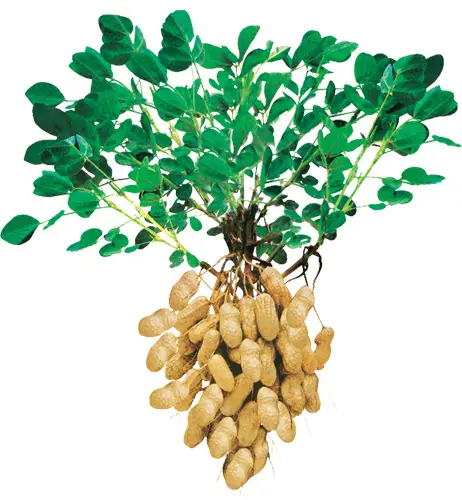
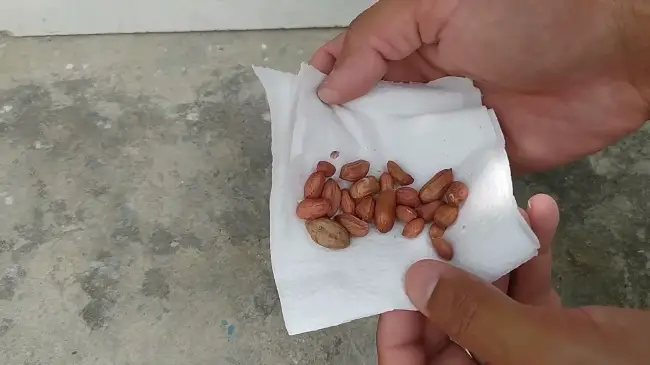
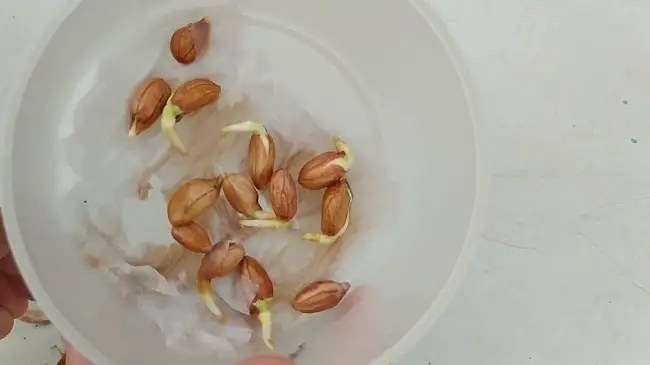
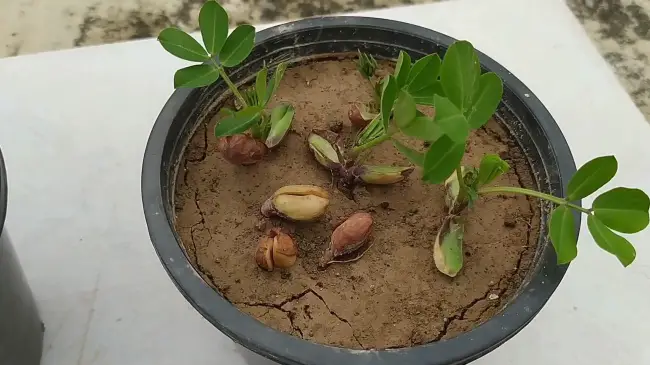
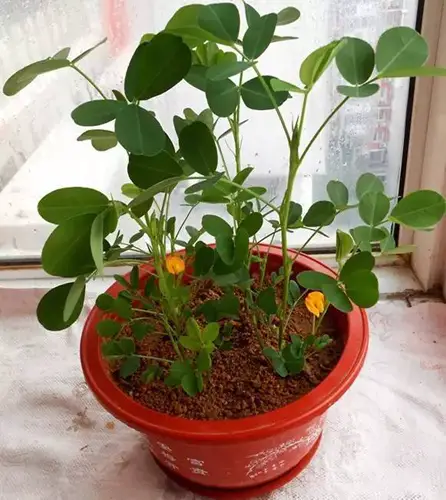
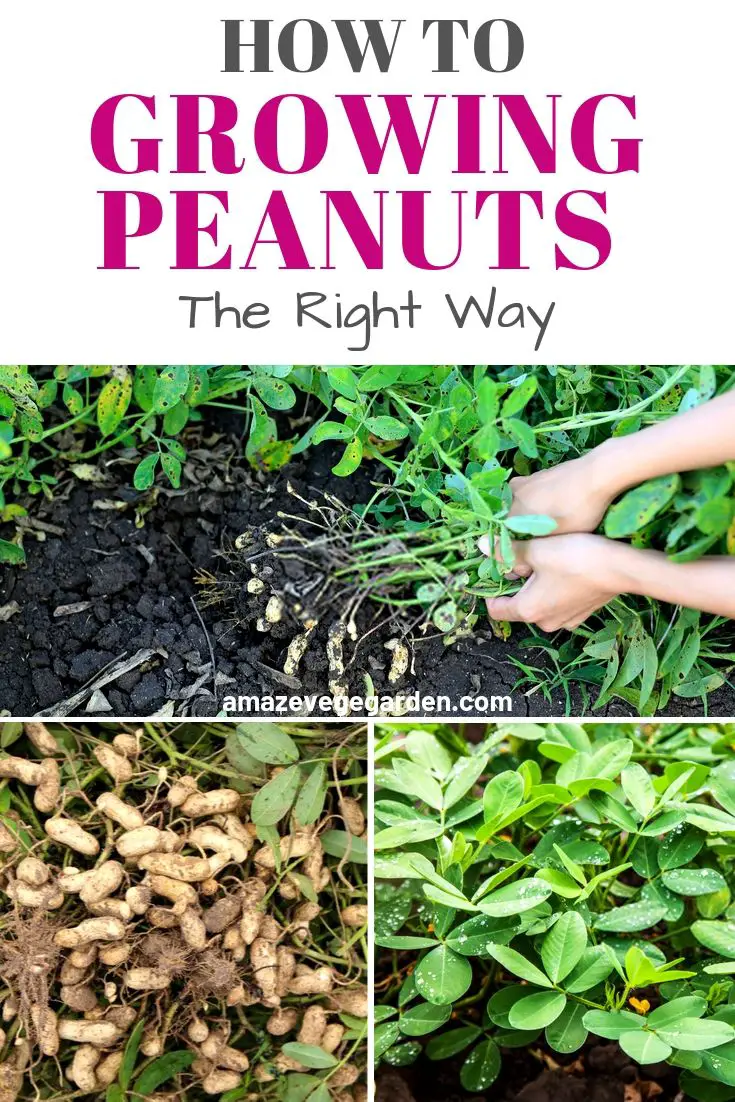
Does goat manure have a lot of nitrogen in it? I use a lot of that in my gardens. But not sure about putting it on soil for peanut growing,.
Goat manure is higher in nitrogen than horse and cow manures — on average, it has 22 pounds of nitrogen in 1 ton. It can contain pathogens that can make people sick. Always use well-composted goat manure, especially if you’re using the manure on edible crops.
I love peanuts too. Now I can plant my own peanut. I will follow helpful tips in this article and I hope to harvest more peanuts soon. Thank you for sharing this helpful information. Keep sharing more.